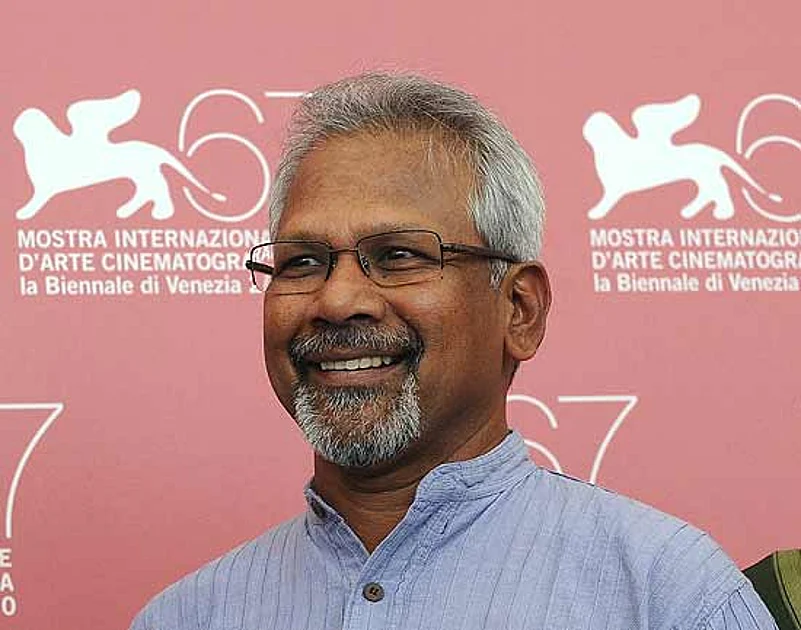In the interests of full disclosure, I must state upfront that I have interviewed both Baradwaj Rangan and Mani Ratnam for my forthcoming biography of Rajnikanth, that is also being published by the same company as the book under review.
Rangan says in his beautifully rendered introduction that he belongs to the generation that came of age with the films of Mani Ratnam. I too belong to the same generation, and have also grown up with his films and remain a faithful follower of his work, though I may not like some of it. Since I first became aware of Rangan’s writings on cinema, I have followed it with the same zeal with which I follow Ratnam’s work. In my considered opinion, he is one of a handful of people writing on cinema in India who can lay claim to the exalted position of ‘film critic’, as opposed to a mere reviewer, given that he not just expresses his opinion, but also provides a detailed analysis of a film, even if the work in question is so much dross.
Conversations with Mani Ratnam is one of the finest books on Indian cinema ever. It follows the Q&A format employed in Hitchcock: A Definitive Study of Alfred Hitchcock by Francois Truffaut and Conversations with Scorsese by Richard Schickel and can take its rightful place alongside those paragons of the genre. Ratnam has the reputation of being an introvert, but that’s mainly because he does not suffer fools gladly. Ask him a stupid question and he’ll give you a brief stock answer, thus cementing this reputation. Rangan’s questions are anything but that. He starts off by treading the water lightly and circles around Ratnam by asking some general questions. The questions make for as much delightful reading as Ratnam’s answers, given that they are incredibly informed and analytical. When Rangan dives in and throws in the occasional bouncer, Ratnam is more than equal to the challenge, choosing either to dead bat it or knock it out of the park. Too many reviews of this book have reproduced some of these delicious exchanges and I’m not going to spoil your reading pleasure by reproducing them here. The book does demand a fair knowledge of Ratnam’s work. On the other hand, for the uninitiated, it’s a great starting point for Ratnam’s brand of cinema.
For my main quibble with the book, I’ll need to recount an incident. I first interviewed Ratnam during the brouhaha surrounding the release of Bombay in 1995. Being a stripling barely out of college, I was completely in awe of the man. Using a technique similar to what Rangan employs in this book, I set up the man with a few informed questions about his body of work and about the film. Once I had enough material to file a piece, I slipped in the question that could have had me thrown out of the room. My question was whether after the national success of Roja, Ratnam had chosen the potentially incendiary theme of Bombay to cash in on ongoing national issues and milk them for cinema. There was a long pause and then Ratnam looked at me reprovingly and said: “I’m pained.” He then provided a very convincing explanation on why exactly he made Bombay. I included that long pause and Ratnam’s look in the piece that I eventually filed. Rangan chooses to erase every bit of incidental emotion (like ‘laughs’ and ‘frowns’) from his transcription. While this is done with the noble intention of letting the reader being his or her own judge of Ratnam’s answers, it robs the replies of feeling. It’s like the musical cues in Ratnam’s films that Rangan quizzes him about in the book being removed from the final cut of the film, thereby rendering it artsy. Ratnam is a self-professed commercial director and this aspect of a book about him could have been commercial as well. And, though the titles of Ratnam’s own films have been translated in English, I wish the titles of some of the south Indian films referred to could have been translated as well. Many readers would surely want to know what Pattanathil Bootham means. These are minor issues in what is a masterly portrayal of a filmmaker’s work and processes. Now, if you’ll excuse me, I’m going to dust off my Mani Ratnam DVD collection and watch them all over again, using Rangan’s excellent book as a primer.
(Naman Ramachandran’s biography of Rajnikanth is out in December)
















